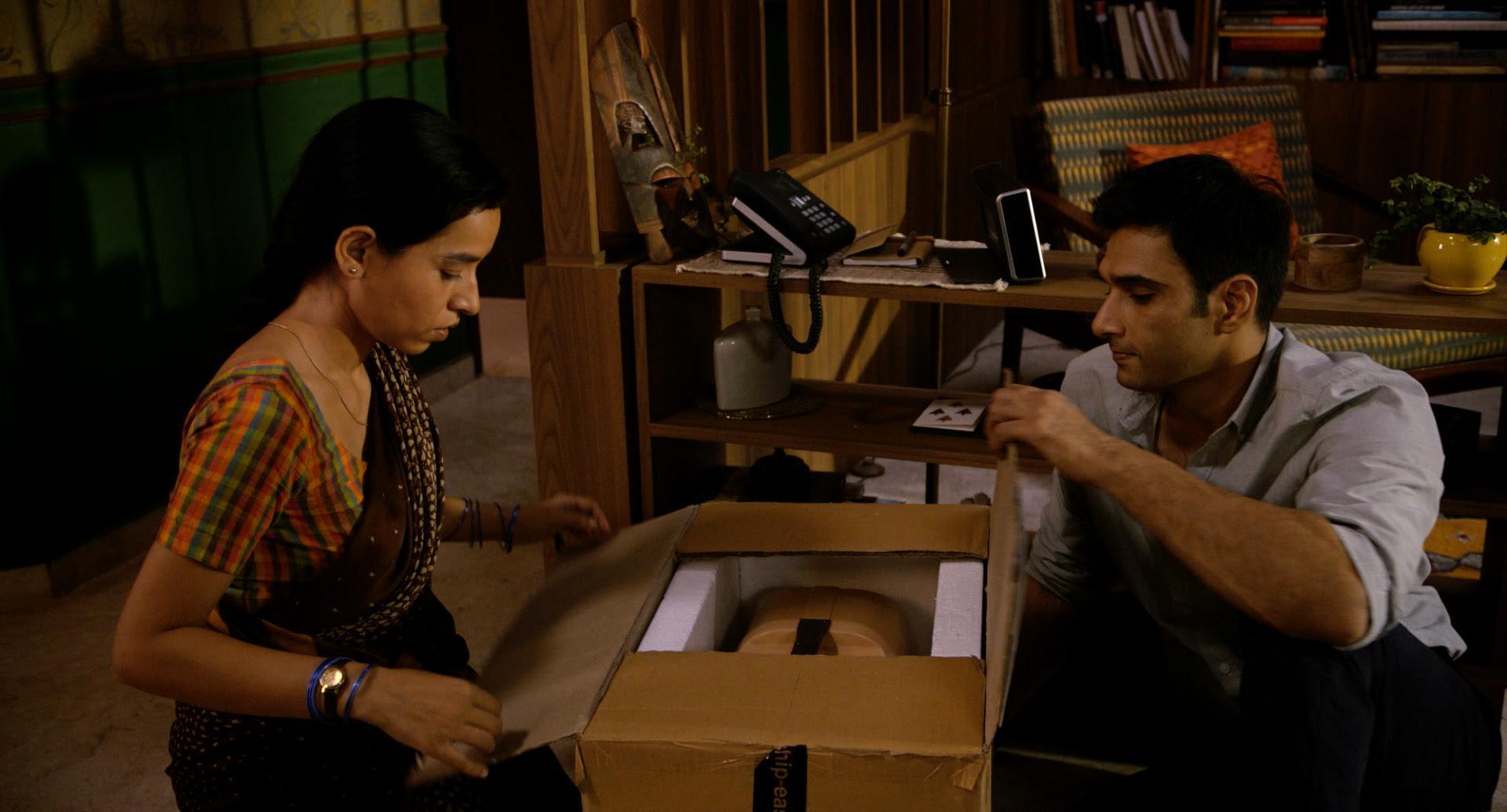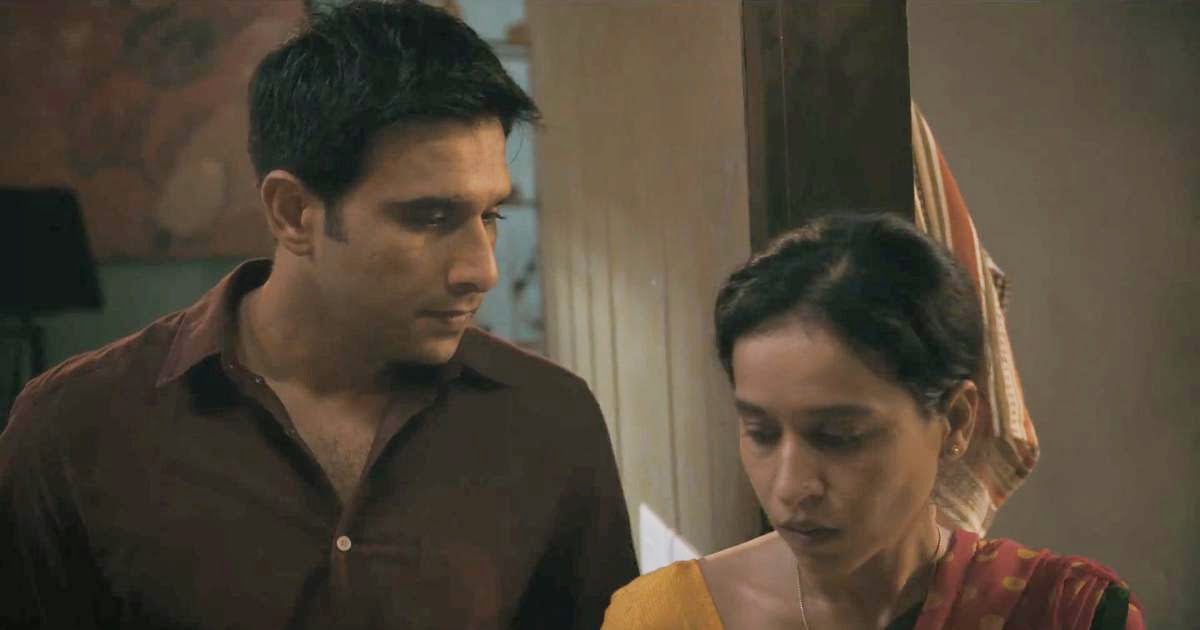I was having a conversation with my sister last weekend about what to watch on TV and she directed me to the film Sir, released on Netflix on January 9, 2021. Starring Tilottama Shome and Vivek Gomber, Is Love Enough, Sir? is marketed as a progressive ‘love story’ between a man and his domestic worker that breaks societal barriers. A ‘love story’ would definitely not be the label I would attach to describe the film. More accurately, Sir is a story of deliberate caste-blindness and gender privilege. Spoilers ahead.
Ashwin is the male protagonist in Sir; his father is an affluent real estate builder, and his mother runs a business that places women from villages in wealthy urban homes as domestic help. Ashwin lived in New York as a struggling writer and had to return to South Bombay to be with his family when his brother passed away; and he now works for his father. His hired help, Ratna, comes from his mother’s placement agency. Ratna, the female protagonist and the unequivocal star of Sir, is a young widow who provides for her natal family that live in a remote village in Maharashtra and is also funding her younger sister’s education.
Also read: Netflix’s Sir: The Indian Audience’s Fascination With The Rich-Man-Loves-Poor-Girl Trope
Sir does not list any last names of the characters; their caste locations have been left ambiguous. Excluding surnames is a very important directorial decision. No individual in Indian society is ‘casteless’; caste influences every domain in our life from where and how we are born to where and how we die. This deliberate myth of ‘castelessness’ in Sir turns our attention away from caste to only focus on class barriers and in that, reveals the caste privilege of those who made this film, because only those with caste privilege can afford to be ‘casteless’. This invisibilisation of caste in Sir is also part of the liberal, Brahminical project to reinforce a false dichotomy between “regressive villages” and “progressive cities”, thereby divorcing ourselves from our own culpability in maintaining caste divisions in our urban universe.
This invisibilisation of caste in Sir is also part of the liberal, Brahminical project to reinforce a false dichotomy between “regressive villages” and “progressive cities”, thereby divorcing ourselves from our own culpability in maintaining caste divisions in our urban universe.
Sir further hammers home this specious argument by focusing on the ill-treatment of women and widows that seems to be restricted to villages only; in cities, widows have the privilege of wearing bangles – a ludicrous indicator of ‘progress’. Urban spaces are not free of caste segregation, and simply refusing to acknowledge caste differences is disingenuous and farcical. In a society where you don’t even have to meet someone to identify their caste, the fact that we have to go on a detective mission to anchor these characters in a caste hierarchy seems like a twisted joke only Savarnas can crack.
Ashwin and his family eat meat; from their displays of wealth and family occupation, it is certain that he is part of the oppressive-caste group – either a Brahmin, Kshatriya or Baniya. Other indicators of Ashwin’s caste privilege are his ability to go to America to study writing and living in a brutally expensive city such as New York on a struggling writer’s income. Practically speaking, it is unlikely that he would be able to afford to live in New York without his family’s financial support. His lifestyle, home in South Bombay, and appearance also allude to his immense caste and class privilege. Ratna is a vegetarian, though she cooks meat as part of her job. The fact that she compromises on her vegetarian-ness for her job, has friends who eat meat, strongly believes in the power of education to uplift her family’s social and financial circumstances, and lives in a one-room-kitchen chawl in Mumbai after quitting her job with Ashwin signals that she is from a caste-oppressed background – a Bahujan.
Another strong indicator of the caste positions of the central characters in Sir is when Vicky, Ashwin’s friend, says “Your mom wouldn’t even sit at the same table as her” when he suspects that something is going on between Ashwin and Ratna; this points to rituals of purity and pollution that oppressive-caste members observe when dining with people from castes they claim to be superior to. Forget being at the same table, Ratna and Ashwin are never even shown to eat in the same scene. Ratna has separate steel utensils she eats in, can only experience leisure either outside the home or in her tiny ‘servant’s quarters’ away from the parts of the house that Ashwin and his guests typically inhabit, and does not have access to air conditioning or even a full-length mirror.

This social background is important to interrogate whether Sir is a love story using an intersectional lens of caste and gender. Love, similar to enthusiastic sexual consent, is an emotional exchange between two individuals who have the capacity to leave or withdraw at any time. Ashwin kisses Ratna. Ashwin’s home is Ratna’s place of work; this is workplace harassment.
The ease with which we forget this reality is evidence of the Savarna nature of the #MeToo movement that swept social media a few years ago. Bahujan women have historically been victims of sexual exploitation from oppressive-caste men with no access to justice; they are forced to quit these exploitative situations, and this is exactly what happens in the plot. With limited access to law enforcement and judicial redress, they are already rendered powerless by a system that is controlled by Savarnas. Quick test to see if this is true – how many oppressive-caste men have been brought to justice for sexually assaulting/harassing Bahujan women? I can think of none, despite the regularity of these violent excesses.
In a system that is already skewed in Ashwin’s favour in Sir, does Ratna really have the power to say no, to withdraw consent? Was she even asked? The best she can do is repeatedly and desperately ask her employer to forget what happened. Can we imagine what would have happened had she said that she was not interested? Likely outcomes are being fired or being assaulted. As Savarna women, we know all too well the things we have done under duress for fear of aggravating male anger; how come we don’t extend this righteous indignation to Bahujan women? How is their kiss a marker of ‘love’?
Sir reminded me of an ad that had a very memorable tagline – “Aapko biwi ki nahi, mixer ki zaroorat hai”. Ashwin shows no interest in Ratna’s personhood. Her deep familiarity with his likes/dislikes and routine indicates that she has been working in his home for a long time; Ashwin remains unaware that she is a widow. He asks her no questions and is not really interested in her ambitions until she brings them up. How can we call this a ‘love story’ when it took ‘falling in love’ to even recognise Ratna’s humanity? Ratna uses her newly learnt skills and sews him a shirt as a birthday gift; he spends money and buys her a sewing machine. How often have we heard the adage “money doesn’t buy love”? Is spending money the only way that he thought he could support her? Who ends up doing all the emotional and physical labour in this ‘love story’? The Bahujan woman, of course.
Also read: Film Review: The Great Indian Kitchen – Serving Patriarchy, Piping Hot!

Ashwin displays little to no social and emotional intelligence. He routinely makes Ratna uncomfortable, causing other domestic helpers who are also part of her social circle to make fun of her. He displays a sense of entitlement and arrogance that is typical of men and of oppressive caste people – he wants what he wants, and he will do anything to get it, irrespective of the impact and social cost it may have on the person he ‘loves’. He is unwilling to put her needs first, showing no recognition of the difficult situations he subjects her to. The film seemingly demands empathy for a man who is doing the bare minimum of talking to his domestic help as a human being; this kind of lazy writing is infuriating and reinforces how little Bahujan women are expected to settle for.
Lastly, he gives up none of his caste and class privilege in Sir. Barring one instance, when his guests and family are rude to Ratna, Ashwin apologises to her in private, thereby not challenging the status quo. He upholds caste segregation practices in his household – she eats separately, sleeps in a tiny hovel and only mingles with other domestic workers. He only questions this gaping divide between them when he sees her eating while sitting on the kitchen floor after serving guests at his mother’s house. His resultant anger is laughable because she eats while sitting on the kitchen floor in his own house which he has apparently not paid attention to. In response to his anger, Ratna’s calm reply of “it’s always been like that here” is perhaps the only moment of Sir with any intellectual and narrative fidelity to lived experiences of domestic workers.
He upholds caste segregation practices which He only questions when he sees her eating while sitting on the kitchen floor after serving guests at his mother’s house. His resultant anger is laughable because she eats while sitting on the kitchen floor in his own house which he has apparently not paid attention to.
There is a distinct divergence in the way he is expected to treat the person he ‘loves’ and his domestic help, a realisation that eats up the timespan of the entire film. He never invites censure or ridicule from his oppressive-caste family for ‘love’; the stakes for him stay low from beginning to end. He never interrogates his family, culture or religion, but somehow magically understands that he cannot pursue her while remaining in India. In a completely unbelievable Bollywood-esque ending, Ashwin escapes to America, disregards her clear request for him to not contact her, and attempts to woo her from a different country. That Sir has been positioned as a ‘love story’ is more proof of the entitled, caste-blind gaze of the director, Rohena Gera. Sir is not a progressive, love-crosses-all-bounds film. It is a caste-blind film that reminded me of masculine and Savarna entitlement. It won the award for Best Film and Best Actress at the 19th Annual New York Indian Film Festival – a festival that was likely judged by similar diasporic caste-blind Savarna elites.
Sir was good in an ironic way; it brought to light the abject caste-based segregation that haunts urban domestic spaces. However, if you put all these caste-based problems aside for a moment, Tilottama was fabulous. But, as Ashwin’s friend Vicky astutely points out, “How do you put that aside for a moment?”
Sanchita is an aspiring caste traitor and can be found on Instagram.
Featured image source: Scroll.in





I was actually stumped by this interpretation of the movie and it made me think how complicated is the human mind when it maneuvers the complicated thicket of society.
Sachita Dasgupta is definitely a very good critic but I feel that the criticism sounds too caustic in nature where I don’t see any positive feedback in favour of the Director, Robena Giri who has been categorised as caste-blind Savarna elite. Subtracting phallic illusion and developing positive emotions for a domestic help in this class driven society is very uncommon and making a film with this subject itself should get accolades and extraction of feminine energy in this apathetic manner is not the fluid we were looking for.
Unnecessary obsession with caste! If there is a caste-agnostic story, take it just as it is. Just a story of how human emotions play, and their relevance to the societal norms around them. Digging to this extent to find caste biases is just paranoid. It is not about regressive villages and progressive cities – anyone who migrates from their original society into a new one gets a cover of anonymity, and is able to make an attempt at creating a new life for themselves. This review is just sensationalizing for the sake of it.
I haven’t seen the movie, but watching the trailer, was disturbingly reminded of the Shiney Ahuja case years back when he allegedly raped his maid servant and the furore it had caused. For some people, it was unimaginable that a man of his good looks and class privilege could rape his maid servant or that a woman of her stature could find such overtures offensive. I don’t think caste privilege was discussed much even then. Employer-employee relationships, especially when it comes to the unorganized sector with its more entrenched hegemonies, have to be stripped of romanticism when translated to the screen.
It is amazing how people look at the same movie differently. I grew up having privilege of having domestic help around the house. I never gave a second thought about why they ate last, ate from a different plate, ate cold food or took our other insults so lightly. However, when I went out to study abroad, my whole perspective about the domestic help changed. When I used to fly back home, I used to wonder if I am even a good person tolerating the treatment of our domestic help in such a demeaning way. So I am glad that someone made a movie about class, rather than caste. because I believe for rich people living in the cities with foreign education, economic class is more important that caste issues, I can vouch for that. Besides, if a domestic help is brought in to cook and live inside the house, I think is it given that she/he does not come from the lower caste. Maybe if it was a driver or a watchman, it is another tale…
Sorry folks, but I’m unclear on how this is film being purported as a love story in any sense of the word. Outside the narrative of a dutiful woman from the countryside pursuing a passion in a big city, this film is pretty cringe-worthy.
Put aside the treatment of Ratna by others in the film, which unfortunately is not unique and quite common in many other places in the world that employ (or exploit) service workers, Ashwin’s entitlement, a function of being the benefactor of family privilege, lends itself to him feeling fine to force himself upon her. I would think someone who spent time in NYC would have learned better.
I cannot speak much to the particulars of caste-culture and its inherent issues, but it does not seem much different from classism here in the US, how certain people always receive the “short end of the stick”. I do not see caste being at all divorced from the film, quite the opposite. I suppose films like these are necessary to recognize what’s wrong in society and start the dialogue towards a more fair and equitable society.